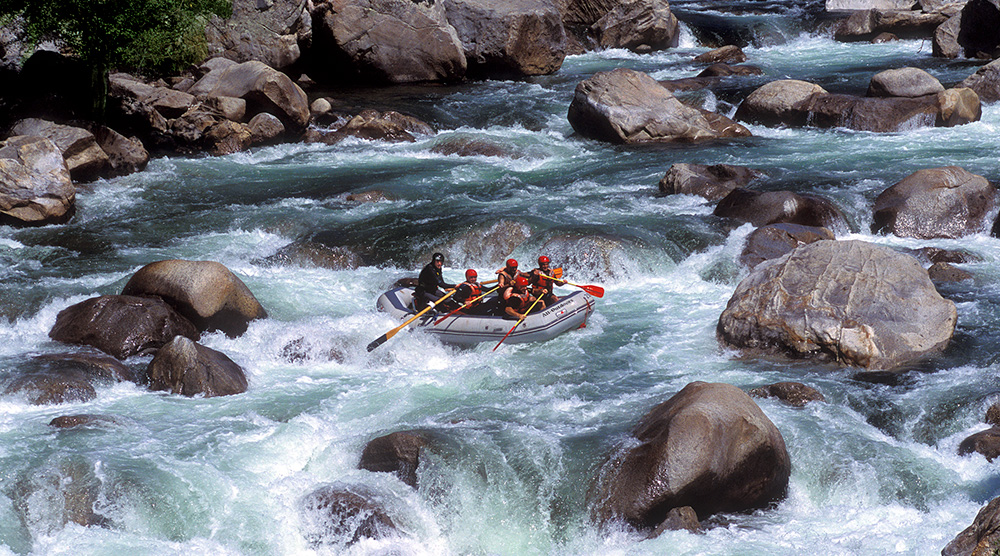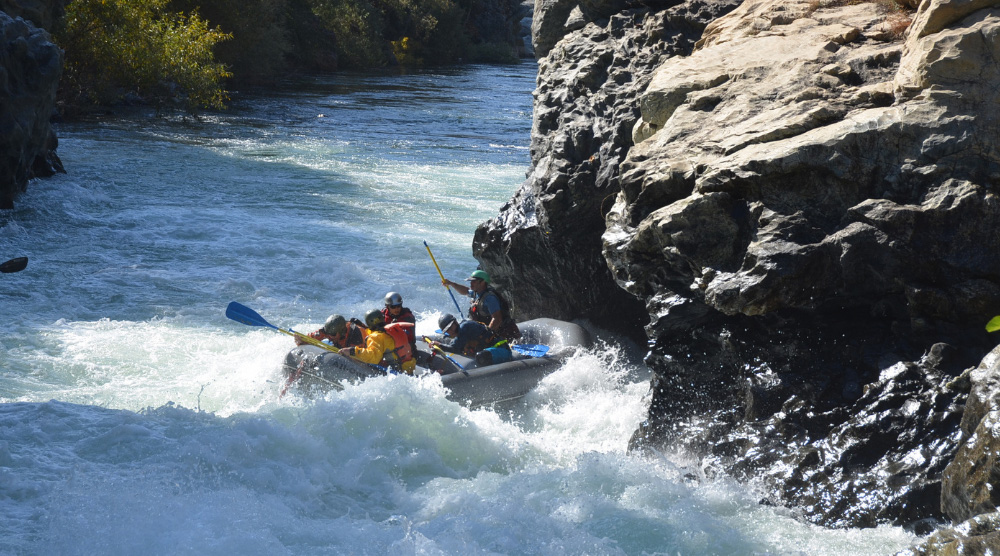The 4 R’s: Rivers, Rocks, Rafts, & Rafters
Posted August 16, 2021 by Helen Robertson, AO river guide
I know it sounds a little strange, but Rivers and Rocks have a love-hate relationship. They are opposites but they get along pretty well. Without rocks, we wouldn’t have rapids. Rocks can create obstacles in the flow of the river, but they also keep the river contained, direct it downstream, and beneath the surface they create the fun waves and hydraulics we love to splash through while navigating the rapids. Here are a few things to keep in mind before you think a rock is going to give you a hard time on your way downstream.
Four Fun Facts to Keep in Mind About the 4 R’s
1. Rocks Shape Rivers
Rocks have been organizing rivers and rapids since forever. Typically, rocks in the main flow of current will get pushed out and downstream by large floods. When a rock is so stubborn and stands its ground against the mighty force of water, the river will form a path or channel around it. These deep channels in the river house the fastest and most enjoyable stretches of water. Over time, no matter the obstacle, water will find a way to get downstream and when it does, we get in the current and go with it!

2. Rocks Make Great Pillows!
As water pushes onto a rock, the rock pushes it back. The action of fast moving current ricocheting off such an immovable solid object will often create a cushion of water piling up on the exposed portion of the rock. This “pillow” of water won’t work well in a bed, but in a river it acts as a liquid shield so that floating objects like rafts or rafters are repelled away from danger and magically moved to either side of the rock. It’s like the new auto safety technology that brakes for us, keeps us in our lane, and steers us along! More power to the rocks and the river!

3. Rocks Can be Used for Spins and Pivots!
Who doesn’t love a good spin move? Plenty of rapids out there require the use of rocks to either bounce you in another direction, or to redirect momentum. Our rafts are tough and designed to absorb impact. And while we do our best to be gentle on them, they can withstand the impact of most rocks. We will prepare you for rock interactions by teaching you how to stay in the raft whether it be leaning in for a small little bump, or a ‘holding on!’ for a more jolting hit.

4. Rafts and Rafters can Make Mean Rocks in the River Behave Themselves
Truth be told, a good portion of every day rafting is spent avoiding rocks. But as noted above, rocks are not as menacing as you might think (they can even be helpful!). Guiding a raft down a river with a bunch of rafters in it, is a bit of an art. And like a lot of good art, it does not always make sense. Don’t be surprised when your guide has you enter a rapid sideways, backwards or diagonally. Almost any direction (as long as the boat is rightside up!) can make for a successful run through the rapids. This can be unsettling when it looks as if the current is moving you directly in the direction of a big ol’ rock. But a few strokes in the proper direction (especially at the right time) can do a lot to get the raft and the rafter quickly away from that rock and back to happily floating downstream in the primary flow of the river.
